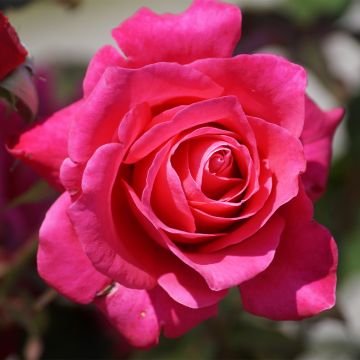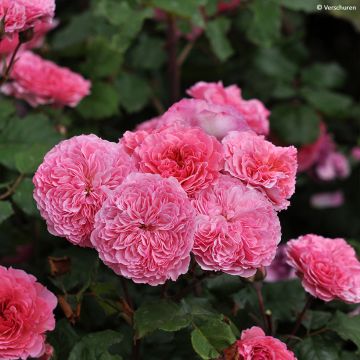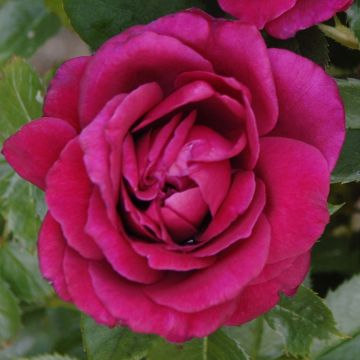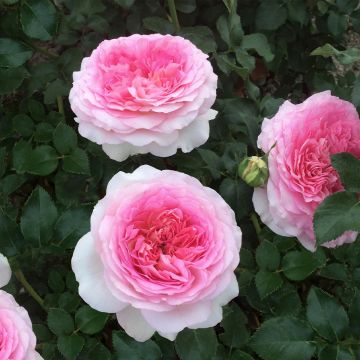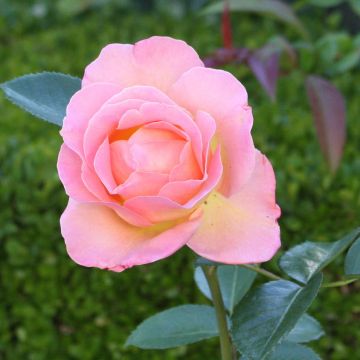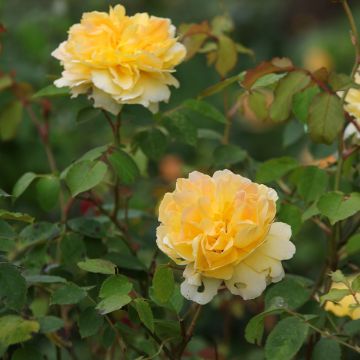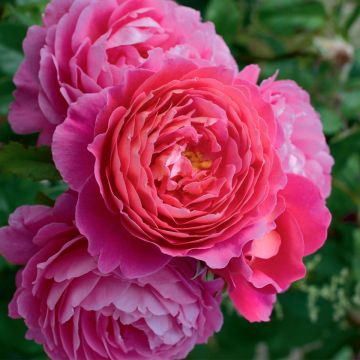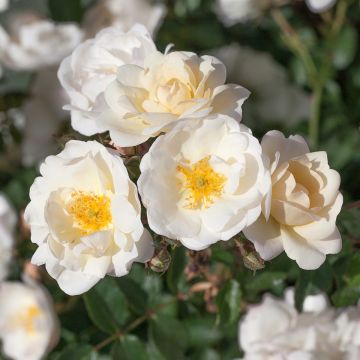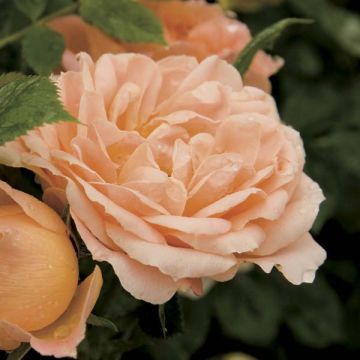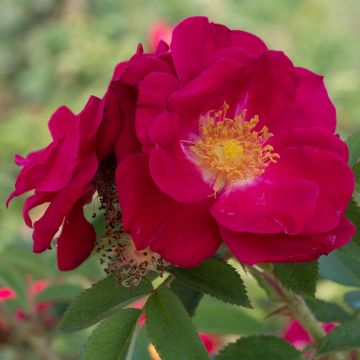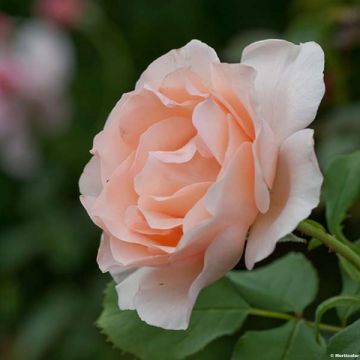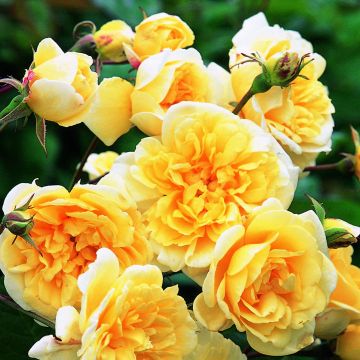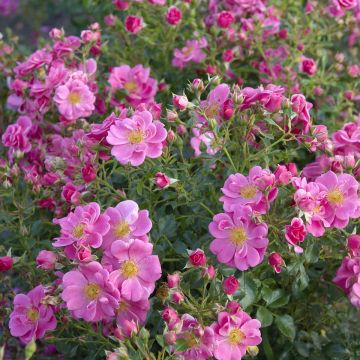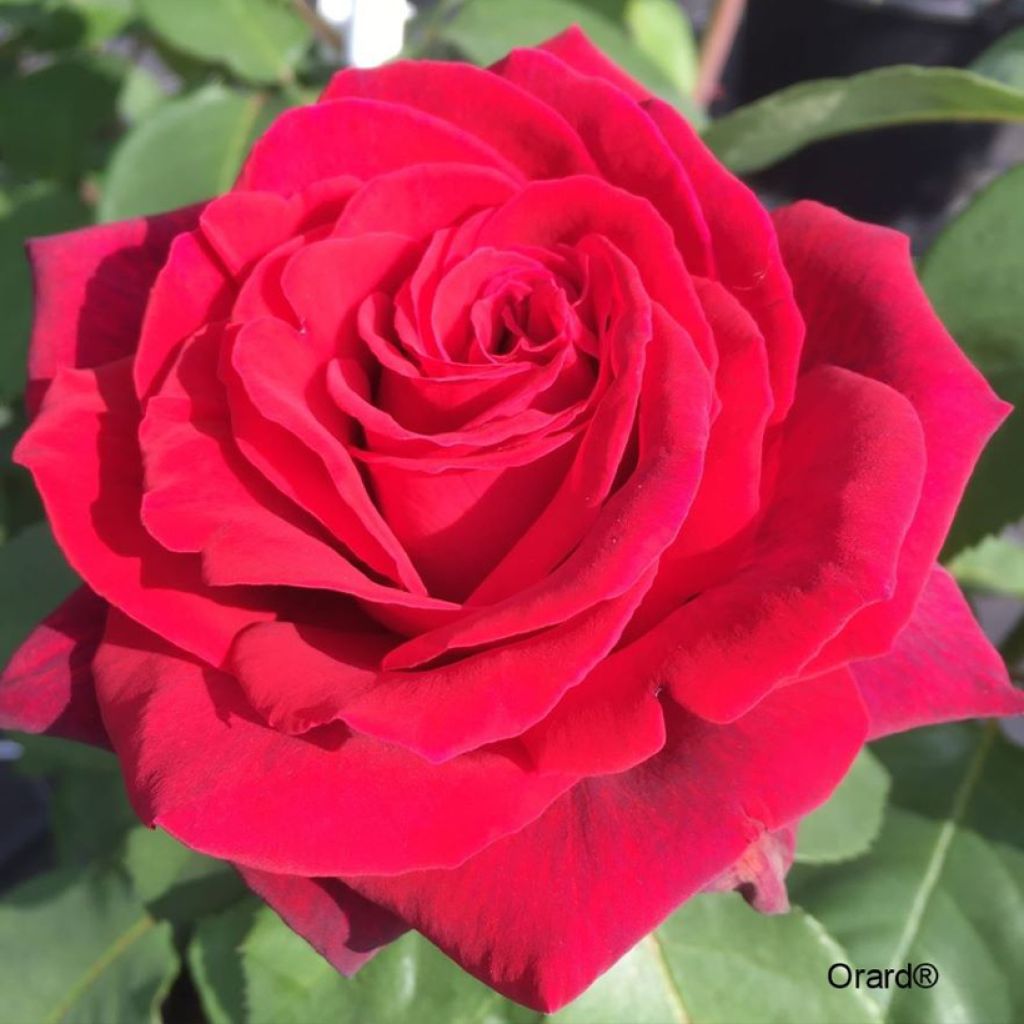

Rosa Perugino - Hybrid tea rose
Rosa Perugino - Hybrid tea rose
Rosa hybride de thé moderne Perugino® Oralipar
Thanks to the staff (for order preparation and shipping), the bare root rose I received looks healthy. Planted in the ground, close to the "Starlet Rose Natalie" variety, I am now patiently waiting for it to take root... or not?
Thierry, 31/10/2024
This item cannot be shipped to the selected country
Delivery charge from €5.90
Delivery charge from €5.90
More information
Schedule delivery date,
and select date in basket
This plant carries a 24 months recovery warranty
More information
We guarantee the quality of our plants for a full growing cycle, and will replace at our expense any plant that fails to recover under normal climatic and planting conditions.
From €5.90 for pickup delivery and €6.90 for home delivery
Express home delivery from €8.90.
From €5.90 for pickup delivery and €6.90 for home delivery
Express home delivery from €8.90.
Does this plant fit my garden?
Set up your Plantfit profile →
Description
The Perugino Rose is a large-flowered rose that captivates with its deep red colour and powerful fragrance. This bushy rose is ideal for lovers of elegant roses, with its classic charm and spiralled flowers. Vigorous and perpetual, it offers an abundance of roses between May and October. Perfect for borders or flower beds, it easily fits into all sunny gardens. Its roses bring a sophisticated touch and a fragrant note to bouquets.
The Perugino Rose belongs to the group of large-flowered roses or hybrid tea roses. This type of rose is distinguished by its elegant large flowers, often solitary on each stem. Hybrid tea roses are appreciated for their spectacular roses, remarkable in bouquets, and their long flowering period. Created from crossings between old roses and modern roses, they are known to combine beauty, fragrance, and resistance.
The Perugino Rose has been selected for its ornamental qualities and natural resistance to diseases. It was created by the breeder ORARD, famous for its robust and floriferous rose selections. With a bushy habit and very strong growth, this bush reaches a height of 1 metre to 1.10 metres. Its roses are large, with a diameter of 10 cm, and have a refined turbinated shape. They are adorned with a deep red colour that catches the eye. Composed of 70 petals, they emit an intense fragrance, with marked floral notes. The abundant and perpetual flowering renews itself in successive waves from May-June until the first frosts. The dark green, matt foliage forms an elegant contrast with the red roses. This deciduous foliage, not very susceptible to rose diseases, is absent in winter.
The Perugino Rose fits into different styles of gardens, whether in colourful borders or in small groups of 3 plants to make its large flowers a focal point. It pairs well with many perennials with summer flowering such as Agastache 'Blue Fortune', a plant with blue flowers in upright spikes, Sanguisorba officinalis 'Tanna', with dark red pompom-shaped flowers, and Veronicastrum virginicum 'Fascination' with long lavender spikes. These blooms create an elegant contrast with the turbinated flowers of the rose.
Report an error about the product description
Plant habit
Flowering
Foliage
Botanical data
Rosa
hybride de thé moderne
Perugino® Oralipar
Rosaceae
Cultivar or hybrid
Other Large-flower tea Roses
Planting and care
To plant your 'Perugino' large-flowered rose, work your soil in a 30 cm cube by crumbling the earth well and placing a base fertiliser like dried blood or dehydrated horn at the bottom of the planting hole. Remove your rose from its pot and position by covering the top of the root ball with 3 cm of soil, fill in and water generously to eliminate air pockets. In dry weather, it is necessary to water regularly for a few weeks to facilitate root establishment. Also, remember to provide your rose with special rose fertiliser that promotes plant flowering.
Roses are often spotted or unsightly at the end of summer, but this is not a problem for their development. These spots are not harmful to the rose; it is a natural phenomenon.
Planting period
Intended location
Care
-
, onOrder confirmed
Reply from on Promesse de fleurs
Roses by purpose
Haven't found what you were looking for?
Hardiness is the lowest winter temperature a plant can endure without suffering serious damage or even dying. However, hardiness is affected by location (a sheltered area, such as a patio), protection (winter cover) and soil type (hardiness is improved by well-drained soil).

Photo Sharing Terms & Conditions
In order to encourage gardeners to interact and share their experiences, Promesse de fleurs offers various media enabling content to be uploaded onto its Site - in particular via the ‘Photo sharing’ module.
The User agrees to refrain from:
- Posting any content that is illegal, prejudicial, insulting, racist, inciteful to hatred, revisionist, contrary to public decency, that infringes on privacy or on the privacy rights of third parties, in particular the publicity rights of persons and goods, intellectual property rights, or the right to privacy.
- Submitting content on behalf of a third party;
- Impersonate the identity of a third party and/or publish any personal information about a third party;
In general, the User undertakes to refrain from any unethical behaviour.
All Content (in particular text, comments, files, images, photos, videos, creative works, etc.), which may be subject to property or intellectual property rights, image or other private rights, shall remain the property of the User, subject to the limited rights granted by the terms of the licence granted by Promesse de fleurs as stated below. Users are at liberty to publish or not to publish such Content on the Site, notably via the ‘Photo Sharing’ facility, and accept that this Content shall be made public and freely accessible, notably on the Internet.
Users further acknowledge, undertake to have ,and guarantee that they hold all necessary rights and permissions to publish such material on the Site, in particular with regard to the legislation in force pertaining to any privacy, property, intellectual property, image, or contractual rights, or rights of any other nature. By publishing such Content on the Site, Users acknowledge accepting full liability as publishers of the Content within the meaning of the law, and grant Promesse de fleurs, free of charge, an inclusive, worldwide licence for the said Content for the entire duration of its publication, including all reproduction, representation, up/downloading, displaying, performing, transmission, and storage rights.
Users also grant permission for their name to be linked to the Content and accept that this link may not always be made available.
By engaging in posting material, Users consent to their Content becoming automatically accessible on the Internet, in particular on other sites and/or blogs and/or web pages of the Promesse de fleurs site, including in particular social pages and the Promesse de fleurs catalogue.
Users may secure the removal of entrusted content free of charge by issuing a simple request via our contact form.
The flowering period indicated on our website applies to countries and regions located in USDA zone 8 (France, the United Kingdom, Ireland, the Netherlands, etc.)
It will vary according to where you live:
- In zones 9 to 10 (Italy, Spain, Greece, etc.), flowering will occur about 2 to 4 weeks earlier.
- In zones 6 to 7 (Germany, Poland, Slovenia, and lower mountainous regions), flowering will be delayed by 2 to 3 weeks.
- In zone 5 (Central Europe, Scandinavia), blooming will be delayed by 3 to 5 weeks.
In temperate climates, pruning of spring-flowering shrubs (forsythia, spireas, etc.) should be done just after flowering.
Pruning of summer-flowering shrubs (Indian Lilac, Perovskia, etc.) can be done in winter or spring.
In cold regions as well as with frost-sensitive plants, avoid pruning too early when severe frosts may still occur.
The planting period indicated on our website applies to countries and regions located in USDA zone 8 (France, United Kingdom, Ireland, Netherlands).
It will vary according to where you live:
- In Mediterranean zones (Marseille, Madrid, Milan, etc.), autumn and winter are the best planting periods.
- In continental zones (Strasbourg, Munich, Vienna, etc.), delay planting by 2 to 3 weeks in spring and bring it forward by 2 to 4 weeks in autumn.
- In mountainous regions (the Alps, Pyrenees, Carpathians, etc.), it is best to plant in late spring (May-June) or late summer (August-September).
The harvesting period indicated on our website applies to countries and regions in USDA zone 8 (France, England, Ireland, the Netherlands).
In colder areas (Scandinavia, Poland, Austria...) fruit and vegetable harvests are likely to be delayed by 3-4 weeks.
In warmer areas (Italy, Spain, Greece, etc.), harvesting will probably take place earlier, depending on weather conditions.
The sowing periods indicated on our website apply to countries and regions within USDA Zone 8 (France, UK, Ireland, Netherlands).
In colder areas (Scandinavia, Poland, Austria...), delay any outdoor sowing by 3-4 weeks, or sow under glass.
In warmer climes (Italy, Spain, Greece, etc.), bring outdoor sowing forward by a few weeks.


































